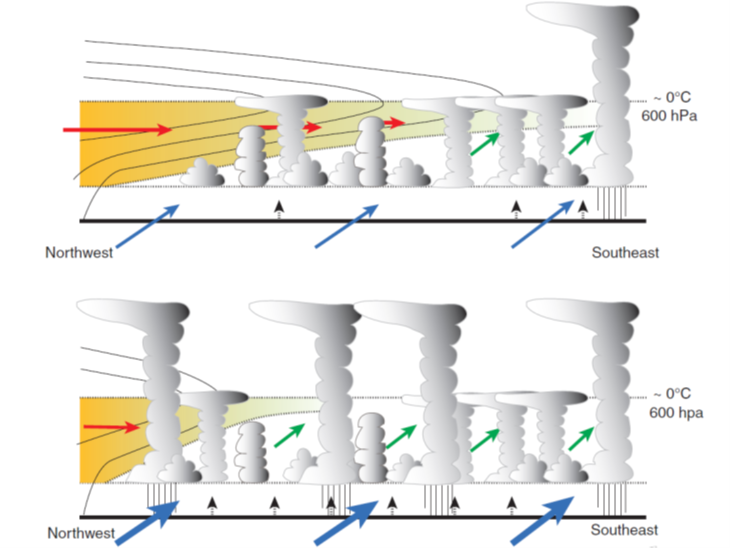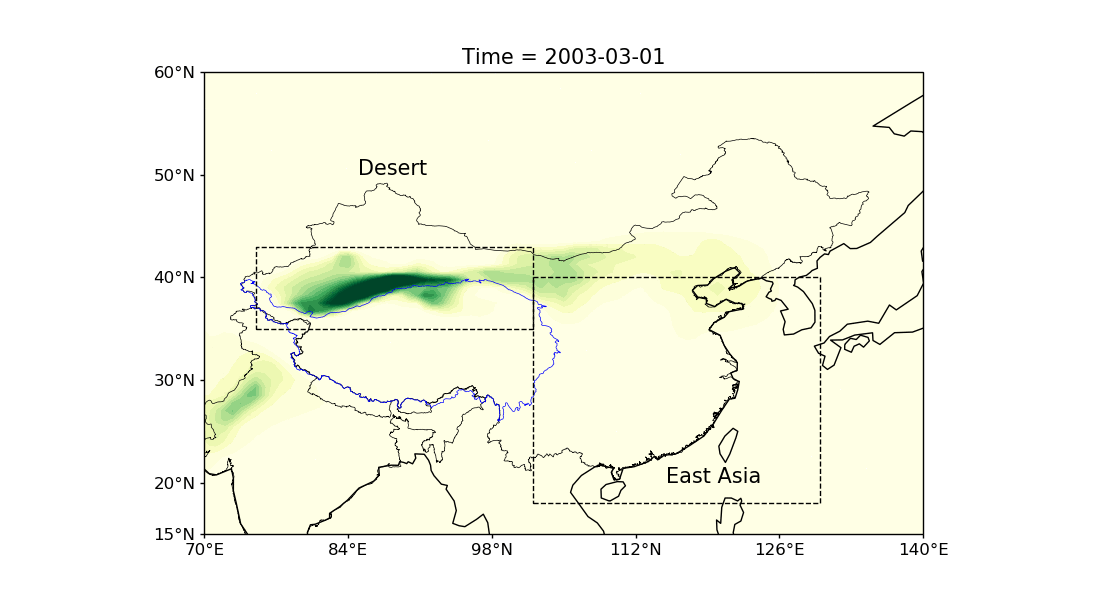One of the main numbers that climate scientists use to predict global warming is the “climate feedback,” which measures how effective warming is at countering the effects of CO2. CO2 reduces how much energy the planet sheds to space. That causes that energy to build up, which warms the planet. Warming causes more energy to be shed to space, countering CO2’s effect. The climate feedback measures how much more energy gets shed to space for each degree of warming. The bigger the feedback is, the less the planet needs to warm.
To talk about the climate feedback, I’m going to use a metaphor. Imagine that we have a newspaper, with a newsroom full of reporters typing away at their laptops, trying to finish enough stories to fill that day’s issue. If the reporters are hardworking, then they won’t need that much time to finish all their stories, just as a big climate feedback leads to not needing that much warming to counter the effect of a CO2 increase. On the other hand, if the reporters are lazy, chitchatting with each other, staring off into space, etc., it will take a lot longer for them to fill the paper. They’re not very efficient, which is like having a very weak climate feedback, which leads to a lot of warming.
Of course, reporters are all quite different to each other – some are more efficient, others much less so – and the same is true of different regions of the Earth: some, like the parts of the Tropics where air ascends, have very strong climate feedbacks, while other areas have a very weak feedback. It’s as if we had two reporters, Trisha and Evan; Trisha is an ace reporter able to write perfect copy at a moment’s notice, while Evan takes forever to finish even the most basic assignments.
Recent climate studies (e.g., Andrews et al. 2015, Zhou et al. 2017, Dong et al. 2019, Bloch-Johnson et al. 2020) have noticed that the climate feedback seems to get weaker over time. There’s a logic to this – early on, your newsroom has both Trisha and Evan working, but Trisha finishes her assignment quickly and goes home early (that is, the ascending tropics finish much of their warming relatively quickly) while Evan takes longer. By the end of the night, your newsroom’s efficiency reflects Evan’s efforts rather than your two reporters combined, so that the newspaper ends up taking longer to finish than you would initially expect. In the same way, the amount of warming we end up with can be larger than we would initially have expected since at first more warming occurs in the ascending Tropics.
In order to understand this changing feedback, a new field of study has emerged in which the effects of warming in each region of the Earth are estimated in isolation, and the combined effect is assumed to be the sum of the contributions from each region. This is a bit like guessing the consequences of hiring both Trisha and Evan for your newsroom by considering how they work in isolation. But of course, if we then put them in a room together, it seems quite likely that they will influence each other – they might encourage each other, or distract each other, or drive each other up the wall, and generally do things we would never have guessed from seeing them on their own. In other words, the newsroom’s efficiency will be different than just taking the sum of its parts.

Figure 1: In this figure, we have taken the HadCM3 climate model and abruptly doubled its CO2 concentration. As it warms in response, its climate feedback gets weaker with time (black line). We can try to recreate this behavior by reducing the Earth to just two different places: the part of the tropics where air ascends, and everywhere else. If we measure the feedback associated with each region in isolation, we would estimate the feedback to evolve as in the blue line. But if we instead look at how the feedbacks in these two regions interact at different temperatures, we get the red line, which more closely estimates the true feedback reduction.
In the last few months, I’ve been doing some research that suggests that this same principle might hold for regional climate feedbacks. I have taken a computer model of the climate called “HadCM3” and subjected it to a sudden doubling of its CO2 concentration (figure 1). As the climate responds, its feedback gets less strong (black line in figure 1), leading to more warming than we would initially expect: ~4.2ºC of globally averaged warming in total. If we try to model this response by estimating the feedback strength associated with both the ascending Tropical region and the rest of the world, each considered in isolation from the other, we would greatly underestimate the reduction in feedback strength over time (blue line), and as a result, underestimate the long-term warming, projecting it to be ~2ºC. If we instead study how the feedback associated with each region can depend on the state of the other region, by allowing there to be “cross terms” between the warming in the two regions – that is, if we first measure Trisha’s behaviour when Evan acts in different ways, and vice versa, before guessing how they will collaborate in the newsroom – then we get a much better estimate of the feedback, its change over time, and the resulting warming (red line).
In conclusion, climate feedbacks, like teams of people, can interact, behaving in more complicated ways than the sum of their isolated parts. Understanding these interactions is key to forecasting global warming.












 Figure 2: Daily variation of Dust Aerosol Optical Depth over the East Asia region during the spring from the CAMS dataset.
Figure 2: Daily variation of Dust Aerosol Optical Depth over the East Asia region during the spring from the CAMS dataset.
 Figure 1: – (a) Simulated and measured IWC. The IWC measured using the Nevzorov probe is shown in red, with the IWC simulated using the in-situ measured PSDs and the 4 particle mixtures shown by the other colours, as outlined in the figure legend. (b) Same as panel (a) but for the 3 GHz radar reflectivity.
Figure 1: – (a) Simulated and measured IWC. The IWC measured using the Nevzorov probe is shown in red, with the IWC simulated using the in-situ measured PSDs and the 4 particle mixtures shown by the other colours, as outlined in the figure legend. (b) Same as panel (a) but for the 3 GHz radar reflectivity.
 Figure 1: Schematic summarizing the changes in wet/dry season rainfall and wet/dry spell lengths in wet/dry seasons found here; the top panel is for dry seasons and the bottom row is for wet seasons (including regions that are wet year-round). (top) Longer dry spells and lower rainfall during the dry season are found over Central and South America and southern Africa. Shorter dry spells and more rainfall during the dry season are found over East Africa and parts of Asia and the Sahel. (bottom) More rainfall in the wet season is found over East Africa and Asia. Less rainfall in the wet season is found over northern South America. Reductions in the length of wet spells in the wet season are found over South America and West and Central Africa.
Figure 1: Schematic summarizing the changes in wet/dry season rainfall and wet/dry spell lengths in wet/dry seasons found here; the top panel is for dry seasons and the bottom row is for wet seasons (including regions that are wet year-round). (top) Longer dry spells and lower rainfall during the dry season are found over Central and South America and southern Africa. Shorter dry spells and more rainfall during the dry season are found over East Africa and parts of Asia and the Sahel. (bottom) More rainfall in the wet season is found over East Africa and Asia. Less rainfall in the wet season is found over northern South America. Reductions in the length of wet spells in the wet season are found over South America and West and Central Africa.